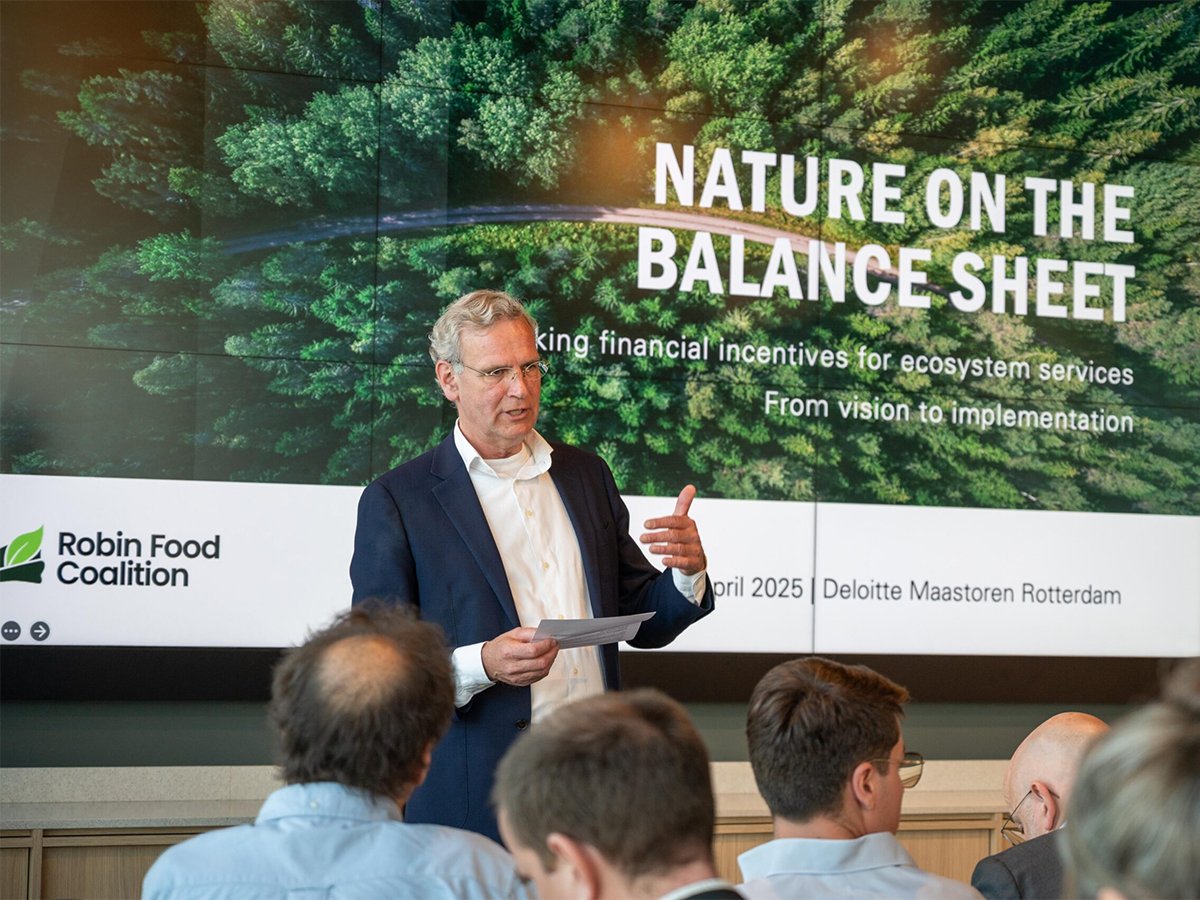EDMONTON – How many gummi bears can you get from one cow?
That was the question University of Alberta students Andrew Toma and Casey Jacobs were assigned to find out as part of their introductory agriculture class.
After much research, developing their own gummi bear recipe and some old-fashioned sleuthing, the pair announced to a packed university audience that 500,412 gummi bears can be made from the gelatin produced from one cow.
Through their research, the pair also learned that gelatin isn’t made from a cow’s hoofs, as is commonly believed, but from its hide, skin and bones.
Read Also

Activist urges new way to measure profitability
Organic activist praises Mark Carney for spearheading the Task Force on Climate-related Financial Disclosures.
Milly van der Loop and Crystal Marinoske told the audience that if the manure from all two million pigs in Alberta were put in a space the area of the main U of A campus, it would be 94.5 metres or 22 storeys deep.
The largest building on campus is 14 storeys high. However, if all the water was removed from the manure, it would be only five m deep.
The Heifer in Your Tank evening, named after one of the questions, was the brain child of U of A agriculture professor Frank Robinson, who believes students learn by doing.
Instead of sitting in class taking notes and writing essays, Robinson wanted first year university students to take a more active role in their education by doing “experimental learning.”
By asking students to research answers to an agricultural question, distill it to its essential elements and give a three-and-a-half minute presentation, Robinson believes they not only retain more information, but also have fun learning about agriculture.
Richard Cairney, editor of the university’s Folio newspaper and one of the six layman panelists who questioned the students about their research, said Robinson is “bringing teaching and research together in an engaging way.”
On the first day of class when Robinson introduced the idea to 46 students, some immediately dropped out. But for those who stayed, it has been one of their most interesting classes.
“This semester, it’s been my best class,” said Allison Cox of Calgary, who along with Agatha Smykot had to find out why farmers want twins and triplets in sheep, but not in cows and horses. Smykot said they unearthed a wide range of information about farm animal reproduction.
The class outline was developed when Robinson was lying in a Turkish hotel room sick with food poisoning. He and his U of A colleagues had been invited to Turkey to receive the World’s Poultry Science Education Award, an international teaching award.
By the time Robinson recovered, he had a list of questions and the outline of the course.
The questions are keys to the program’s success, said Robinson, a poultry management and reproductive physiology professor, or as he calls himself, a poultry gynecologist.
The questions were designed to encourage students to search out a large amount of information, but focus it to a specific answer.
The question, can coyotes be conditioned to not like the taste of sheep, steered Dana Kelly and Darrick Brochu to a 1974 research study for their answer.
In that study, lithium chloride, a drug that causes vomiting and illness, was added to a sheep carcass in an attempt to have the coyote associate illness with eating sheep.
The study worked but was ended because of worries about animal cruelty.
During a presentation on where chocolate milk comes from, if not from brown cows, the audience learned that yak’s milk is pink and camel’s milk doesn’t curdle.
The final question of the evening: if your car burned methane, how far could you travel on the methane from one cow?
Fraser Salmon and Derek Sears had to learn about methane, its production from animals and about vehicles such as the Fiat Green Fleet, which uses methane as its fuel source.
They calculated that a car could travel 3.3 kilometres from the daily output of methane from one cow, or half a km from the daily methane output from a sheep.
Put another way, the car would need the methane from 88 cows or 590 ewes to travel from Edmonton to Calgary.
If all the methane produced from all the cattle and sheep in Alberta was used, the car could travel 17.2 million km, or the distance from Edmonton to Houston, Texas, 4,410 times.














